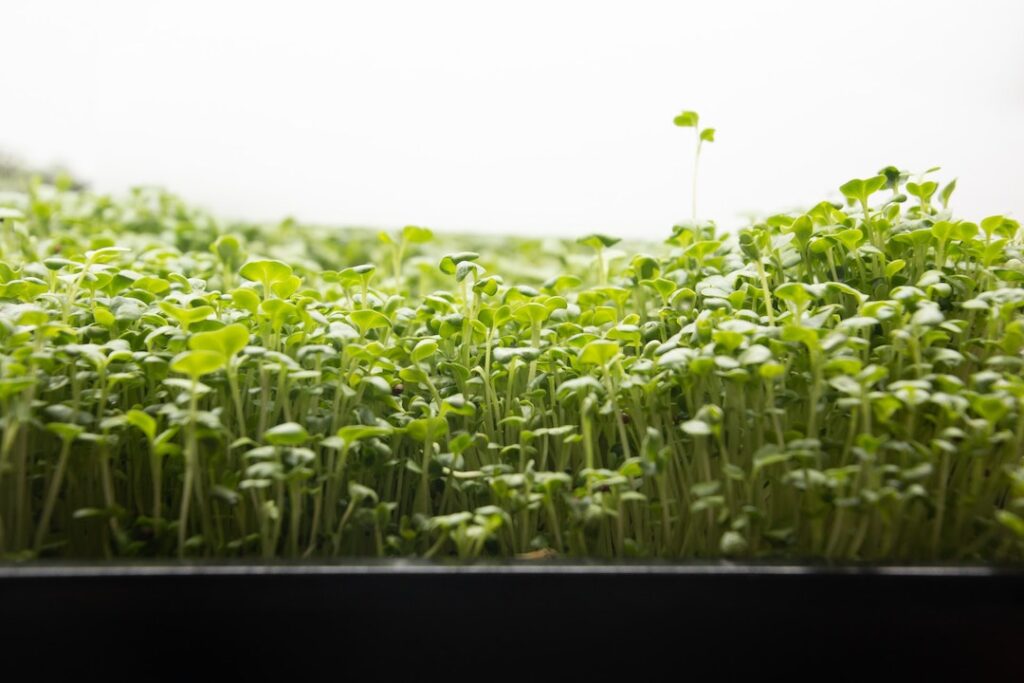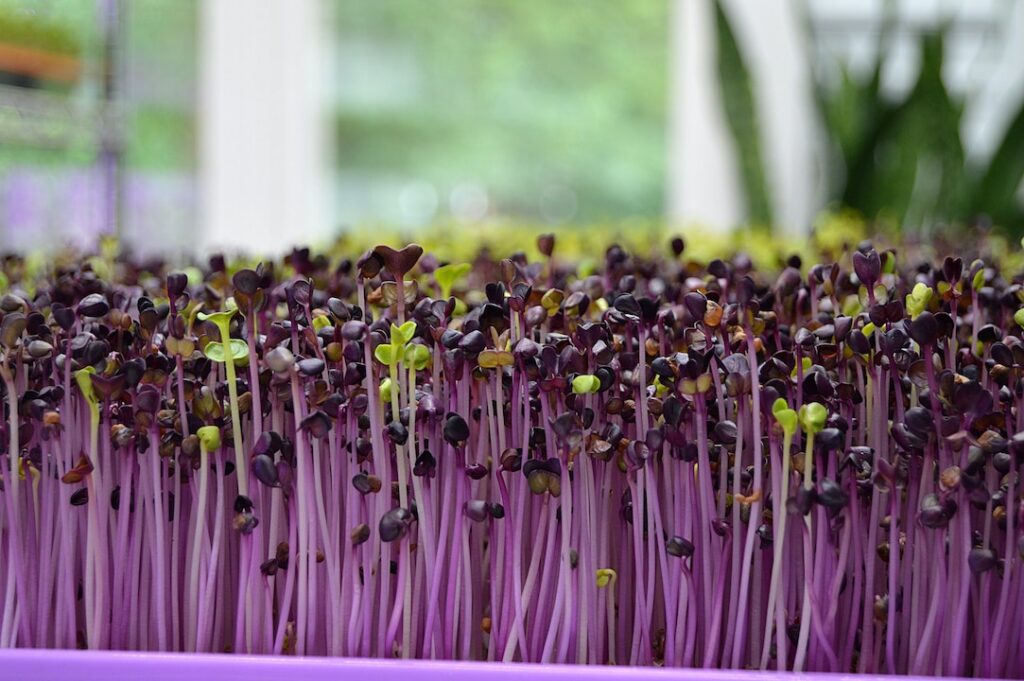No need to stop growing food just because the gardening season is over. Cultivating microgreens indoors is a way to have homegrown produce all winter.

They’ve been the darlings of the restaurant scene for a while. And now, they’re increasingly available in supermarkets. Microgreens are vegetable greens that are harvested shortly after they begin sprouting leaves.
And given enough light, they can be cultivated indoors throughout the winter when outdoor vegetable gardens are dormant, says David Wees, a faculty lecturer in Farm Management and Technology in McGill University’s Faculty of Agricultural and Environmental Sciences (Macdonald Campus). He and his students, who research food production in greenhouses, have experimented with various ways of cultivating microgreens, including on a hemp substrate (growing medium).
“People have been cultivating sprouts for a long time (think bean and alfalfa sprouts),” says Professor Wees. “Sprouts are usually started in the dark. Microgreens, on the other hand, are grown in light. In order for them to be green, they need light.”
Another difference between sprouts and microgreens, he adds, is that sprouts include roots, leaves and stems. In contrast, microgreens are comprised only of stems and leaves.
Among popular varieties of microgreen are broccoli, radishes, peas and sunflowers. “Radish microgreens have a strong taste,” Prof. Wees says. “Sunflower has a vaguely nutty flavour. One of the nicest things about red cabbage microgreens is the colour.”
The plants grow at varying rates. “The slowest to grow—taking about four weeks—are celery, chives and parsley,” Prof. Wees says. “Radishes are fastest. They grow in a week to 10 days. And peas are also fast. Some people grow baby greens, which are plants that have grown a bit past the microgreen stage. The bigger the plant, the stronger the flavour.”
One of the attractions of microgreens, he says, is that because they’re young plants, they contain less cellulose than fully grown vegetables, so are more digestible. “Cellulose is tougher,” he said.
For newbies who have not yet tried growing microgreens indoors, Prof. Wees says the process is relatively simple. “You need a clean place to grow them,” he says. “If you’re using a seed tray, wash it with dish detergent.”
* Choose a medium. “We started microgreens on hemp fibre,” he said, adding that other media, such as potting soils, are also acceptable. Soak the medium with water before spreading the seeds and keep it moist by spraying it throughout the day.
* Light. Like all plants, microgreens need light. So cultivating them throughout the winter may require the addition of artificial light. “A cool-white fluorescent tube or LED light is enough,” Prof. Wees says. “You don’t need expensive lighting. If you have a sunny window, you may not need extra lights at all. From the plant’s point of view, there isn’t much difference between natural light and artificial light.”
* Moisture. Keep the seedlings and the growing medium moist, he says. Invest in a spray bottle and mist the plants daily.
* Optimal temperature. “Room temperature—20 degrees Celsius—is ideal,” Prof. Wees says.
There are many benefits to growing microgreens at home, he adds. “The key is you’ll be able to grow things that you cannot get in grocery stores. Microgreens are rich in certain minerals. They are part of the answer to food security.”
They’re also relatively low-cost, he says. Garden centres stock microgreen seeds as do online seed companies.
Will indoor microgreen cultivation become a trend? “I think some people will do this,” Prof. Wees says. “Will the trend last? It’s hard to tell.”







